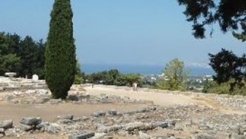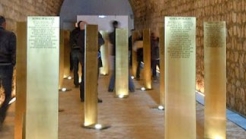

Greece
The Cretaquarium gives the chance to its visitors for a unique «dive» to the wonderful sea world of the Mediterranean.
The Cretaquarium started operating in December 2005. The Cretaquarium gives the chance to its visitors for a unique «dive» to the wonderful sea world of the Mediterranean.
From the great hunter sharks, to the tiny Hippocampi and the spectacle of medusa, the variety of the marine life is shown in front of submarine backdrops of the Cretan sea like the rocks of Matala (south Crete) ant the floor of Vai (Southeast Crete).
The scenery of the Mediterranean is laid out in 60 aquariums (of various sizes, from 125 to 900.000 litres, with a total volume of 1.700.000 litres of seawater), creating 100 different observation points, for about 2500 Mediterranean and tropical organisms.
The Cretaquarium as a part of the Greek Center of Marine Research hands out scientific knowledge about the marine world, emphasizing on the Mediterranean. This is why training programs adapted to the schedule of first and second degree students have been designed and are taking place. The students can learn about the most important phenomena of physics and biology of the sea through live approach and innovative means of tutoring.
https://youtu.be/UZiUiVLPyMw


The Asclepium was since the ancient times the most famous monument of Kos. It was located close to the ancient city, and was full of marvelous statues, works of famous artists.


Aenea was a small Macedonian city, which was attached to the then newlyfounded Thessaloniki, when it was founded in 315BC by Kassandros. It was close to the Thermaikos gulf.


The Museum of the Battle of Crete and National Resistance 1941-45 Municipality of Heraklion was founded and operates from May 1994.
1039 Ε 6061 01515 00